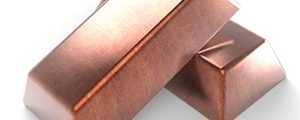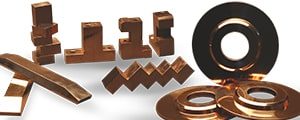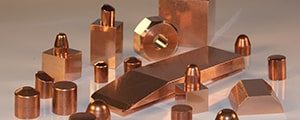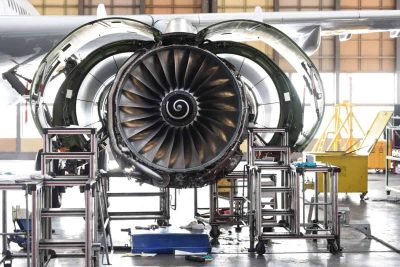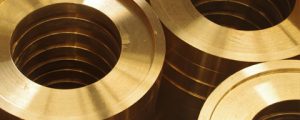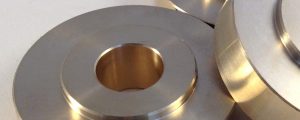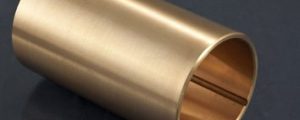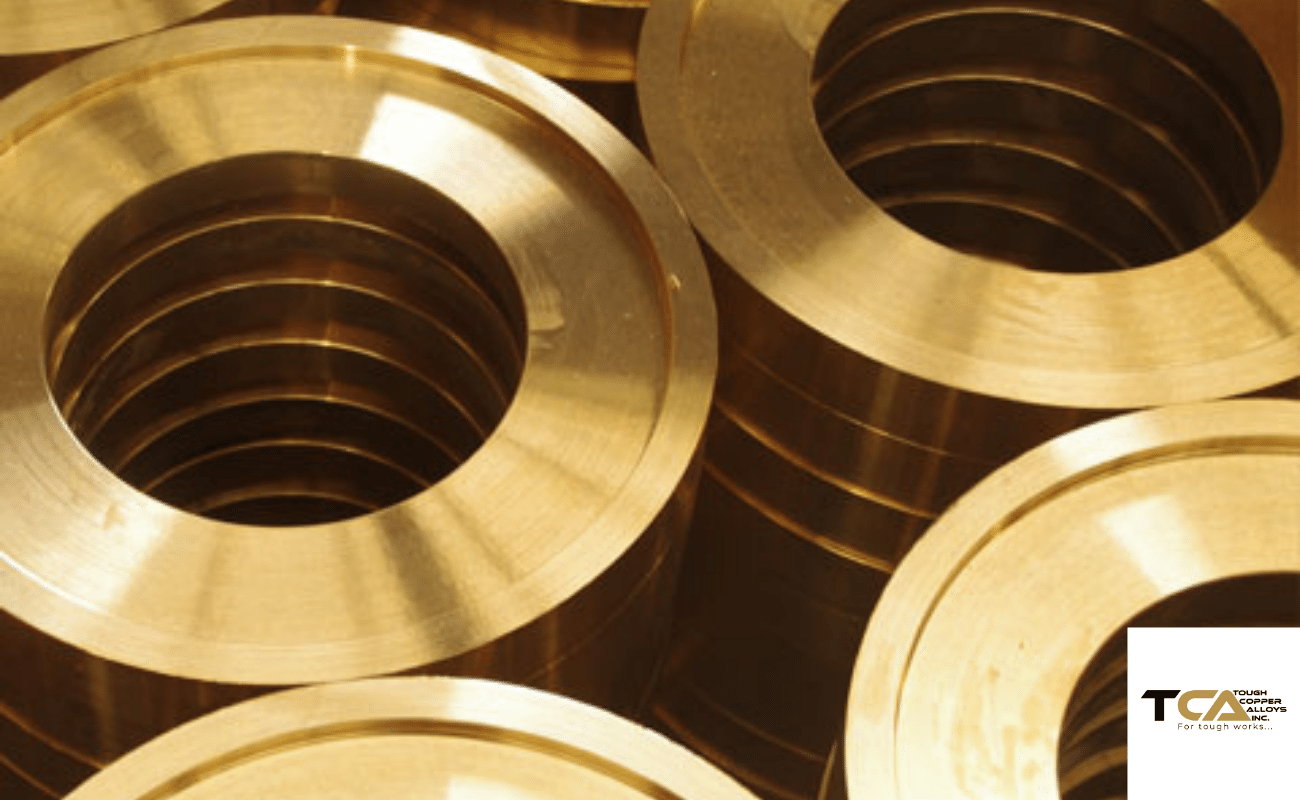What is “C61400” Material?
C61400 is a type of copper alloy that is widely used in various industries due to its exceptional mechanical and physical properties. Also known as aluminum bronze, It is a combination of copper, aluminum, iron, and nickel, with varying proportions of these elements depending on the specific alloy.
One of the key benefits of C61400 is its excellent resistance to corrosion, making it an ideal material for use in marine environments or other applications where exposure to saltwater or other corrosive elements is likely. Its exceptional resistance to wear and tear also makes it a popular choice for parts that need to withstand heavy use.
C61400 is known for its high strength, good ductility, and exceptional thermal conductivity, making it ideal for a variety of applications. It is commonly used in the manufacturing of bearings, bushings, gears, and other mechanical parts that require high strength and wear resistance. It is also a popular material for construction applications where excellent thermal conductivity is required, such as in the manufacturing of heat exchangers and other components.
In addition to its exceptional mechanical and physical properties, C61400 is also a very versatile material. It can be easily machined and formed into various shapes, making it an ideal choice for complex parts and components. C61400 is also a cost-effective material, providing excellent performance at a relatively low cost.
Overall, C61400 is a highly versatile and reliable material that offers a range of benefits in a variety of applications. Its exceptional strength, corrosion resistance, and thermal conductivity make it an ideal choice for a wide range of industries, from marine to construction and beyond.
Application Areas & Industries
C61400 is a copper alloy that finds application in various industries due to its excellent mechanical and physical properties. Its unique combination of strength, corrosion resistance, and thermal conductivity makes it an ideal material for use in a wide range of applications. Some of the key application areas and industries that make use of C61400 include:
Bearings, bushings, and gears: C61400 is commonly used in the manufacturing of mechanical components such as bearings, bushings, and gears due to its high strength and wear resistance.
Heat exchangers: C61400 is used in the construction of heat exchangers and other components that require excellent thermal conductivity.
Marine industry: It is widely used in the marine industry due to its exceptional resistance to corrosion. It is often used to manufacture components for ships, boats, and other vessels that operate in saltwater environments.
Aerospace industry: C61400 finds use in the manufacturing of components for aircraft and spacecraft due to its high strength and resistance to corrosion.
Construction industry: It is used in the construction industry for a variety of applications, including the manufacturing of fittings, fasteners, and other components that require high strength and corrosion resistance. It is also used in the construction of electrical equipment, such as switchgear components and bus bars.
Manufacturing industry: C61400 is used in the manufacturing industry for a variety of applications due to its excellent mechanical properties and versatility. It is commonly used in the manufacturing of complex parts and components.
Automotive industry: It finds use in the automotive industry for various applications, including the manufacturing of transmission components and other parts that require high strength and wear resistance.
Please note that these are just a few examples of the many application areas and industries for C61400. The specific uses for C61400 may vary depending on the specific alloy composition and manufacturing process. It’s important to consult the manufacturer or supplier for the specific properties of C61400 being used in an application.
Common Fabrication Processes of “C61400”
C61400 is a copper alloy that is commonly used in various industries due to its excellent mechanical and physical properties. It can be easily fabricated into complex shapes and components using a variety of common fabrication processes. Some of the most common fabrication processes used for C61400 include:
Casting: C61400 can be cast into complex shapes and components using various casting methods, such as sand casting, investment casting, and die casting. Casting is a cost-effective and efficient way to produce large quantities of parts with consistent quality and accuracy.
Extrusion: Extrusion is a process that involves pushing C61400 through a die to form a specific shape. It is commonly used to manufacture pipes, tubing, and other components with a uniform cross-section. Extrusion can produce parts with high accuracy and excellent surface finish.
Forging: Forging is a process that involves shaping C61400 using compressive force. It can be done using various techniques, such as hot forging, cold forging, and warm forging. Forging is often used to manufacture high-strength components that require excellent mechanical properties.
Machining: Machining is a process that involves removing material from C61400 using cutting tools to achieve the desired shape and size. It is commonly used to manufacture complex parts and components with tight tolerances and high precision.
Welding: Welding is a process that involves joining two or more pieces of C61400 using heat and pressure. It is commonly used to manufacture large components or structures that cannot be made from a single piece of material.
Bending: Bending is a process that involves shaping C61400 into a desired shape by applying force. It is commonly used to manufacture components such as brackets, clamps, and other curved parts.
Please note that these are just a few examples of the many fabrication processes that can be used for C61400. The specific process used may depend on the application and the desired properties of the final product. It’s important to consult the manufacturer or supplier for the specific fabrication process that is best suited for the application.
Chemical Composition
C61400 is a copper-nickel-aluminum bronze alloy that offers excellent strength, corrosion resistance, and wear resistance. It is often used in applications that require high levels of mechanical performance and durability. The chemical composition:
| Element | Composition |
|---|---|
| Copper | 78.0-82.0% |
| Nickel | 4.0-6.0% |
| Aluminum | 8.5-9.5% |
| Iron | 3.0-4.0% |
| Manganese | 1.5-2.5% |
| Lead | 0.05% max |
| Zinc | 0.05% max |
| Tin | 0.05% max |
| Phosphorus | 0.02-0.15% |
| Silicon | 0.005% max |
As shown in the table, C61400 primarily consists of copper, with nickel and aluminum as key alloying elements. Iron and manganese are also present in significant amounts, while other elements such as lead, zinc, tin, phosphorus, and silicon are present in trace amounts.
The chemical composition of C61400 gives it excellent resistance to wear, corrosion, and fatigue. The high nickel content provides exceptional resistance to stress corrosion cracking, while the aluminum content enhances the alloy’s strength and hardness. The iron and manganese content help to increase the alloy’s wear resistance and toughness.
It’s important to note that the chemical composition of C61400 may vary slightly depending on the specific manufacturing process and supplier. It’s recommended to consult with the supplier or manufacturer for the exact chemical composition of the alloy being used in a particular application.
Physical Properties
C61400 is a copper-nickel-aluminum bronze alloy with excellent mechanical properties and resistance to wear, corrosion, and fatigue. The physical properties include:
Density: 8.44 g/cm³
Melting point: 1,050-1,100°C (1,922-2,012°F)
Thermal conductivity: 38-50 W/(m·K)
Electrical conductivity: 8-11 MS/m
Elongation at break: 15-25%
Modulus of elasticity: 120-140 GPa
Hardness: 140-160 HB
C61400 has a relatively high density compared to other copper alloys, which contributes to its exceptional strength and resistance to wear. Its high melting point allows it to withstand high temperatures and maintain its mechanical properties. The high thermal conductivity of C61400 makes it an excellent choice for applications that require efficient heat transfer, while its high electrical conductivity makes it ideal for electrical and electronic applications.
C61400 has a moderate to high elongation at break, which means it can be formed into complex shapes without cracking or breaking. Its high modulus of elasticity and hardness make it a good choice for applications that require high stiffness and durability.
Overall, the physical properties of C61400 make it a highly versatile alloy that can be used in a wide range of applications. Its excellent mechanical properties and resistance to wear and corrosion make it a popular choice in industries such as marine engineering, aerospace, and oil and gas.
Fabrication Properties
C61400 is a copper-nickel-aluminum bronze alloy with excellent fabrication properties. It can be easily machined, welded, brazed, and soldered, making it a versatile alloy that can be formed into various shapes and sizes. Here are some of the key fabrication properties:
Machinability: It has good machinability, which means it can be easily shaped and formed into different parts and components. It can be machined using conventional methods such as drilling, milling, turning, and tapping.
Weldability: C61400 can be easily welded using various welding techniques such as gas tungsten arc welding (GTAW), gas metal arc welding (GMAW), and resistance welding. However, preheating and post-weld heat treatment may be required to prevent cracking and ensure good joint strength.
Brazing and soldering: It can be brazed and soldered using standard techniques and materials. However, care should be taken to avoid overheating, as excessive heat can lead to degradation of the alloy’s properties.
Formability: C61400 can be easily formed into various shapes and sizes using processes such as bending, drawing, and stamping. However, it has a tendency to work harden, so annealing may be required to maintain its formability.
Corrosion resistance: It has excellent resistance to corrosion in various environments, including seawater, making it ideal for marine applications.
Overall, the fabrication properties of C61400 make it a popular choice in industries such as marine engineering, aerospace, and oil and gas, where complex parts and components need to be fabricated with precision and reliability. Its excellent machinability, weldability, brazability, and formability make it a versatile alloy that can be formed into various shapes and sizes to meet different application requirements.
Applicable Specifications of “C61400”
C61400 is a copper-nickel-aluminum bronze alloy that is used in various industries for its excellent corrosion resistance and high strength. There are several applicable specifications for C61400 that are used by manufacturers and suppliers to ensure the quality and reliability of the alloy. Some of the most common applicable specifications for C61400 include:
ASTM B505: This specification covers copper alloy continuous castings, including C61400, for various applications such as bushings, bearings, and gears.
AMS 4880: This specification covers C61400 copper-nickel-aluminum alloy in the form of sand or centrifugal castings, for use in aerospace applications where high strength, wear resistance, and good corrosion resistance are required.
SAE J461: This specification covers wrought and cast copper alloys, including C61400, for various industrial applications such as bearings, bushings, and gears.
UNS C61400: This is the Unified Numbering System designation for C61400 alloy, which is widely used by manufacturers and suppliers to identify and specify the alloy.
MIL-C-11866: This specification covers the requirements for C61400 alloy in the form of forgings and forging stock for use in naval shipboard applications.
ISO 428: This international standard specifies the mechanical properties of copper-nickel-aluminum bronze castings, including C61400.
By following these applicable specifications, manufacturers and suppliers can ensure that C61400 is produced to the required standards and meets the specific application requirements. It’s important to consult with the manufacturer or supplier to ensure that the C61400 alloy being used meets the applicable specifications and is suitable for the intended application.
Thermal Properties of “C61400”
C61400 is a copper-nickel-aluminum bronze alloy that exhibits excellent thermal properties, making it ideal for use in applications that require resistance to high temperatures. Some of the key thermal properties of C61400 include:
Thermal conductivity: C61400 has a high thermal conductivity of approximately 44 W/(m·K), which is higher than many other copper alloys. This property makes it an ideal choice for applications that require efficient heat transfer, such as heat exchangers and cooling systems.
Coefficient of thermal expansion: The coefficient of thermal expansion for C61400 is 16.5 μm/m·K, which is relatively low compared to other copper alloys. This property makes it less susceptible to thermal expansion and contraction, which is important in applications where dimensional stability is critical.
Melting point: The melting point of C61400 is approximately 1040°C, which is higher than many other copper alloys. This property makes it suitable for applications that require high-temperature resistance, such as furnace components and aerospace components.
Specific heat capacity: It has a specific heat capacity of approximately 380 J/(kg·K), which is similar to other copper alloys. This property indicates the amount of heat required to raise the temperature of a given amount of material, which is important in applications such as thermal management.
Overall, the excellent thermal properties of C61400 make it a preferred material for applications that require high-temperature resistance and efficient heat transfer. It’s important to consult with the manufacturer or supplier to ensure that the C61400 alloy being used meets the specific thermal requirements of the intended application.
Typical Uses
C61400 is a copper-nickel-aluminum bronze alloy that offers excellent strength, wear resistance, and corrosion resistance. As a result, it is widely used in a variety of industries and applications. Some of the typical uses of C61400 include:
- Marine applications: C61400 is commonly used in marine environments due to its excellent resistance to seawater corrosion, erosion, and biofouling. It is used in the manufacture of ship propellers, marine hardware, and offshore oil and gas equipment.
- Aerospace applications: It is also used in aerospace applications due to its high strength, wear resistance, and corrosion resistance. It is used in the manufacture of aircraft engine components, landing gear, and hydraulic systems.
- Power generation: C61400 is used in power generation applications due to its high strength, wear resistance, and corrosion resistance. It is used in the manufacture of steam turbine components, generator components, and nuclear reactor components.
- Chemical processing: It is resistant to a wide range of chemicals and is commonly used in chemical processing applications. It is used in the manufacture of valves, pumps, and other equipment that come into contact with corrosive chemicals.
- Industrial equipment: C61400 is widely used in industrial equipment such as gears, bearings, and bushings due to its high strength and wear resistance. It is also used in hydraulic systems, fluid handling equipment, and pump components.
- Automotive applications: It is used in automotive applications such as bearings, gears, and bushings due to its high strength and wear resistance.
- Construction: C61400 is used in construction applications such as architectural elements, roofing, and decorative fixtures due to its attractive appearance and corrosion resistance.
C61400 is a versatile material for many industries and applications. It is an excellent choice for marine, aerospace, power generation, chemical processing, industrial equipment, automotive, or construction.
Equivalents
If you are considering using C61400 copper alloy for your application but are not sure if it’s the right fit, there are other copper alloys that you may want to consider. Here are some C61400 equivalents that have similar properties and characteristics:
C61300: This copper-nickel-aluminum alloy has high strength, corrosion resistance, and good machinability. It is often used in marine and industrial applications that require excellent resistance to seawater corrosion.
C61900: This copper-nickel-tin alloy has good corrosion resistance and high strength, making it suitable for marine and offshore applications.
C63000: This aluminum bronze alloy has high strength and wear resistance, and is often used in applications such as gears, bearings, and valves.
C64200: This aluminum bronze alloy has excellent corrosion resistance and high strength, making it suitable for marine and industrial applications.
When selecting a copper alloy, it’s important to consider your specific requirements such as strength, conductivity, corrosion resistance, and more. By doing so, you can choose the right material for your needs.
In conclusion, while C61400 is a reliable choice for many applications, there may be alternatives that are better suited for your specific needs. Consult with a copper alloy expert or supplier to learn more about these alternatives and find the perfect material for your application.

